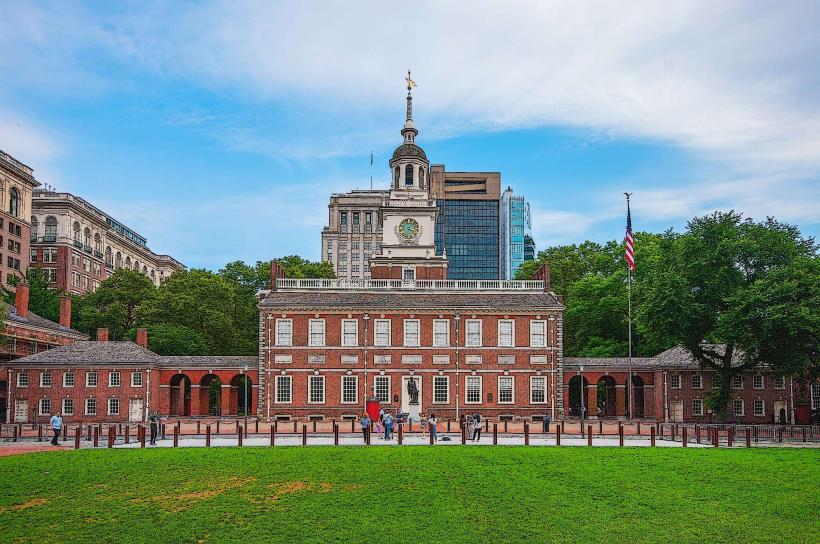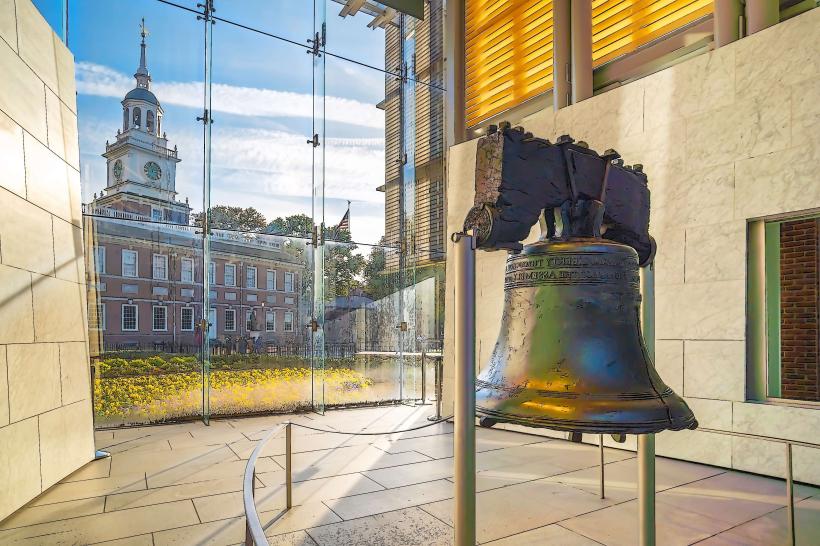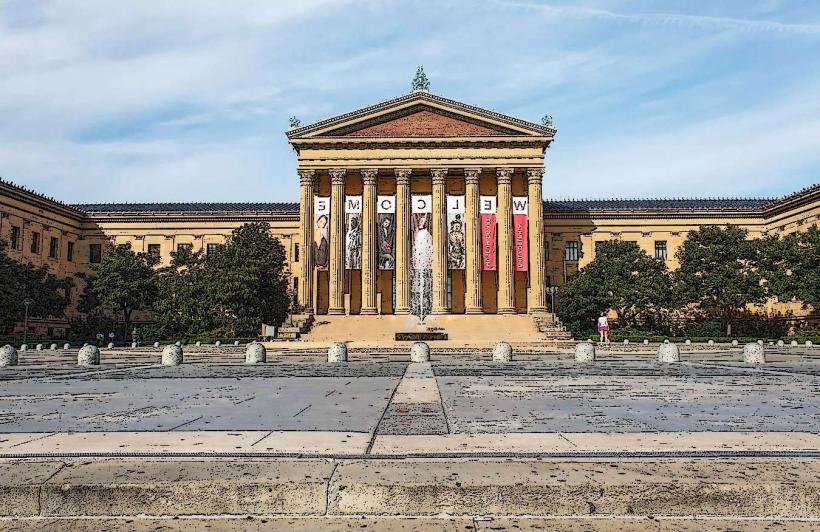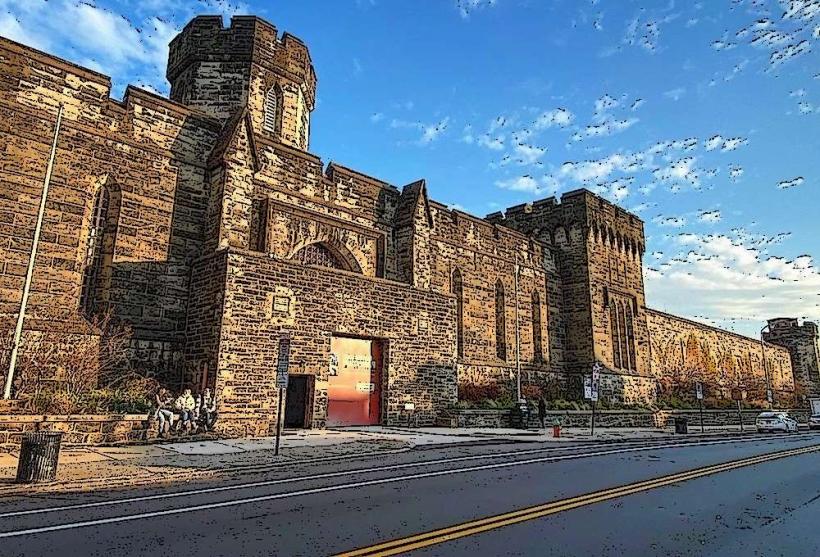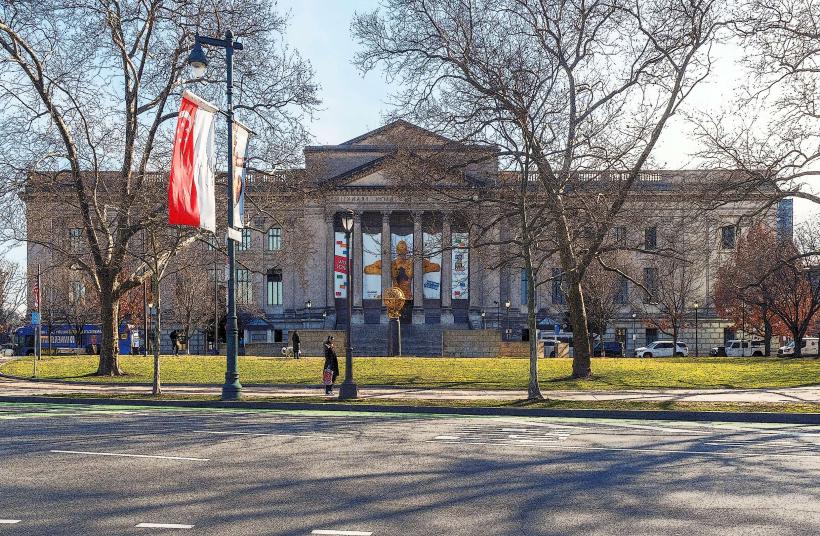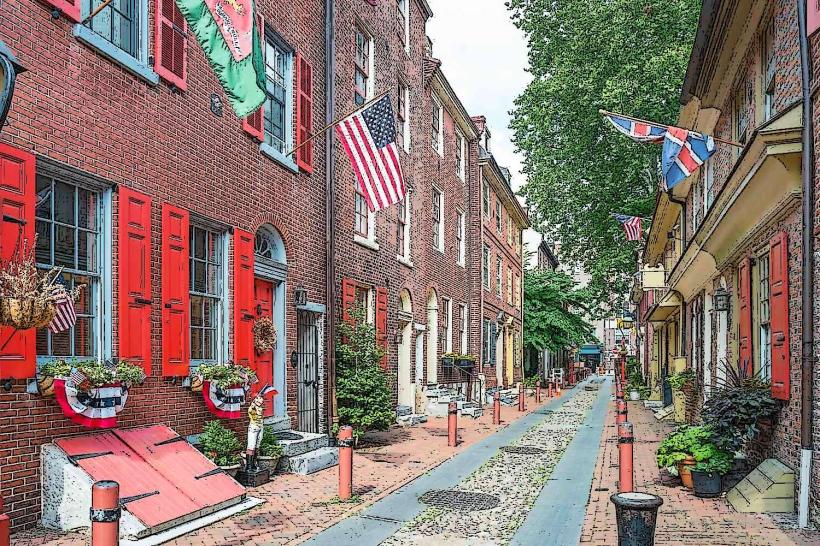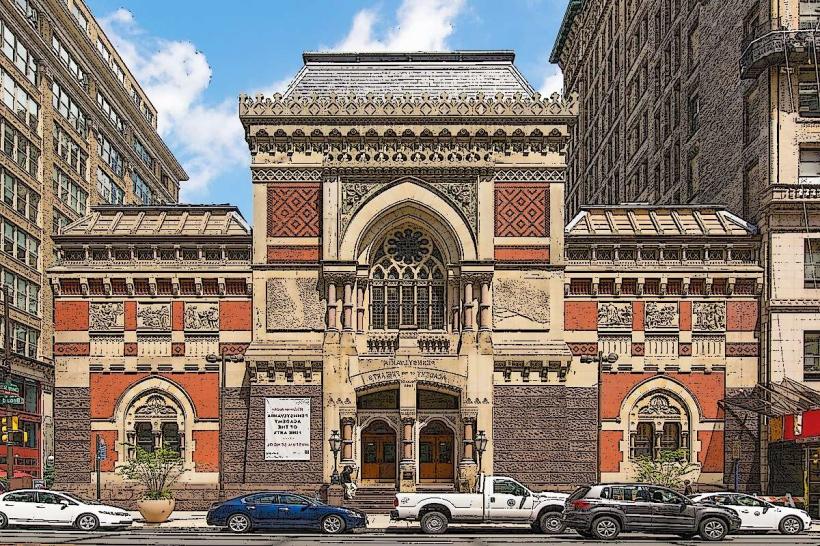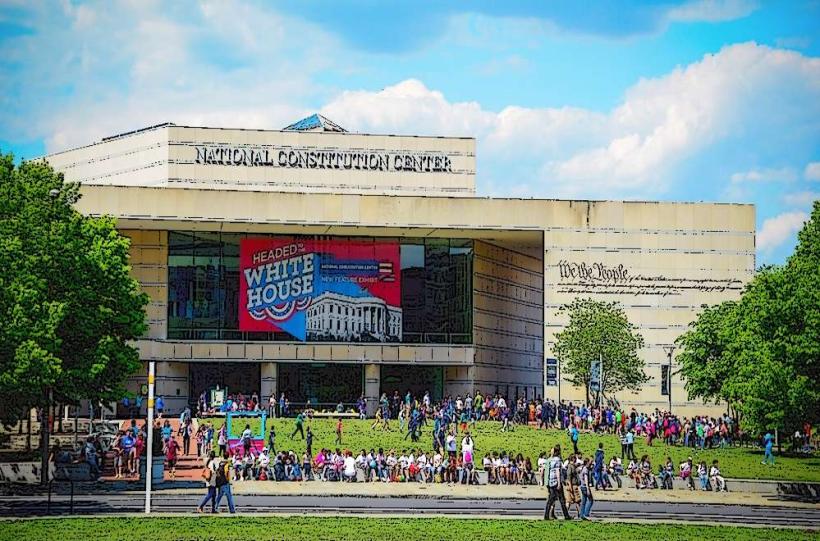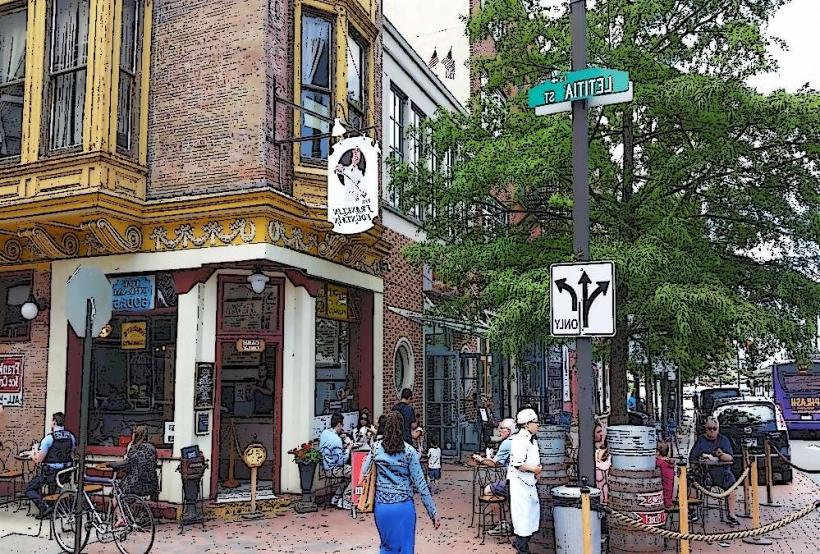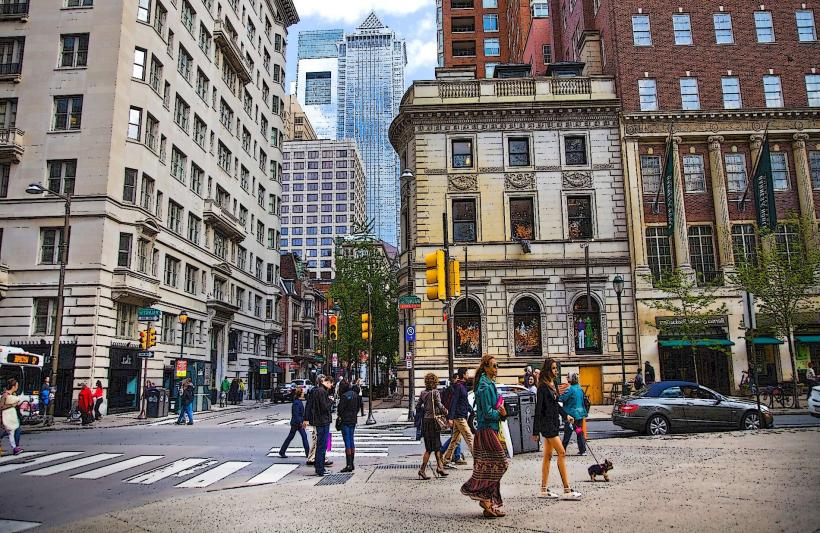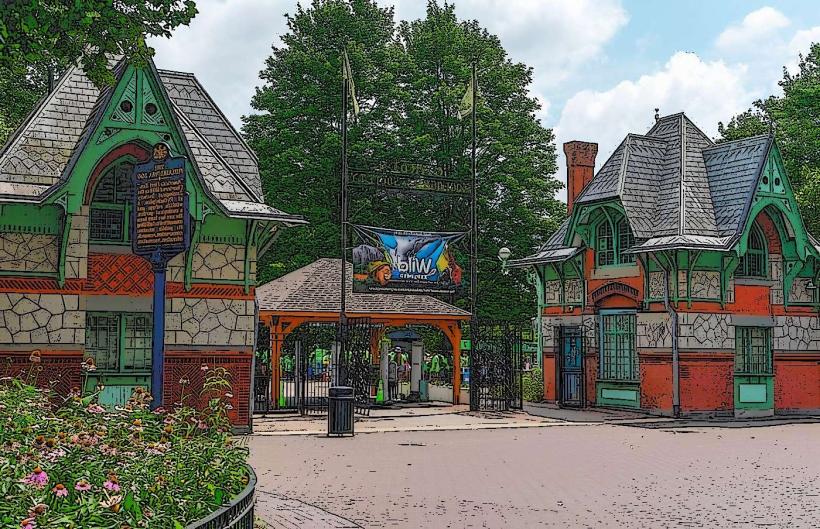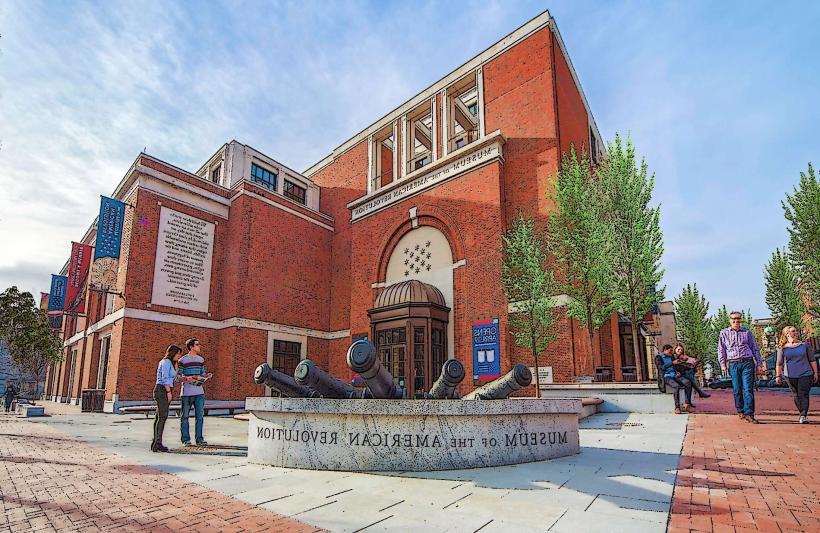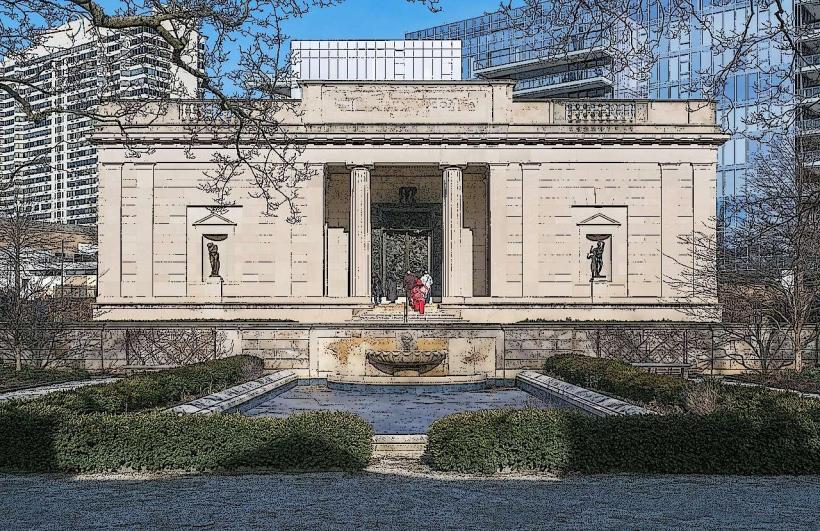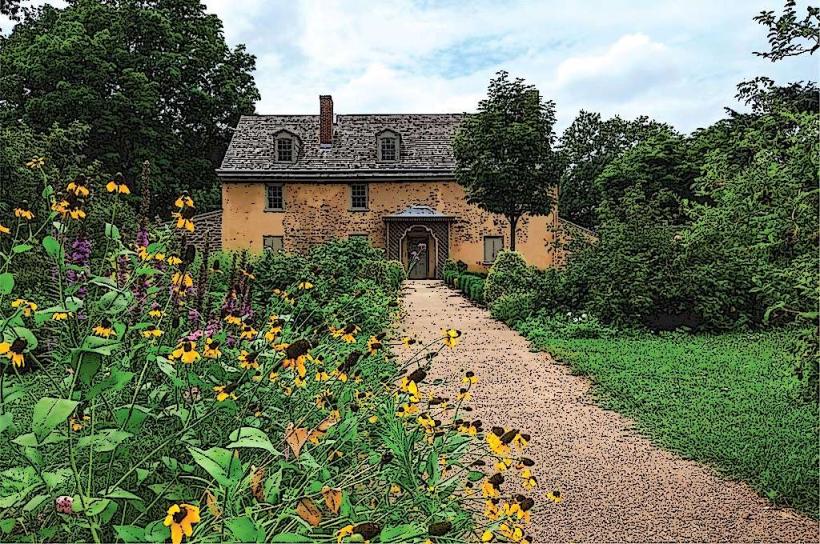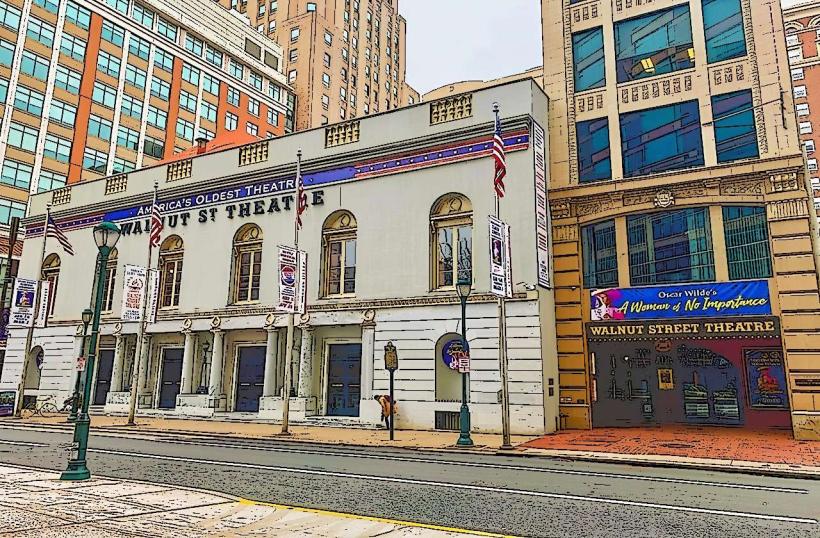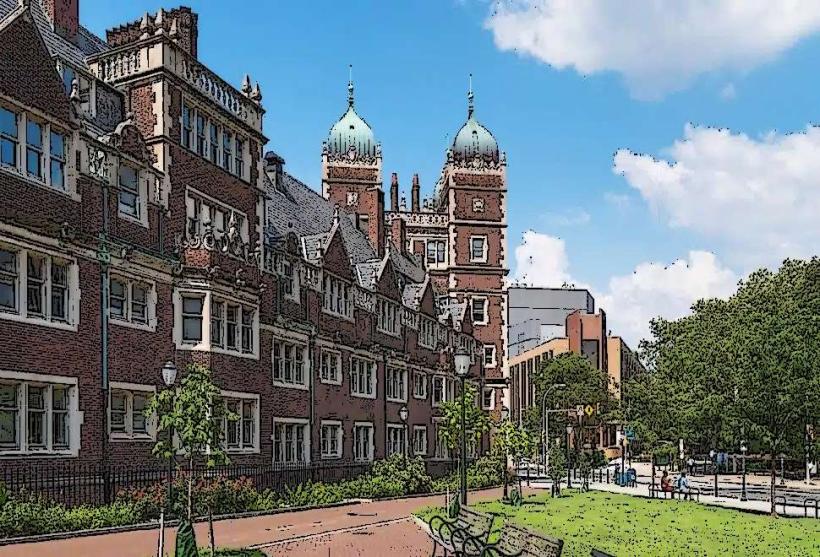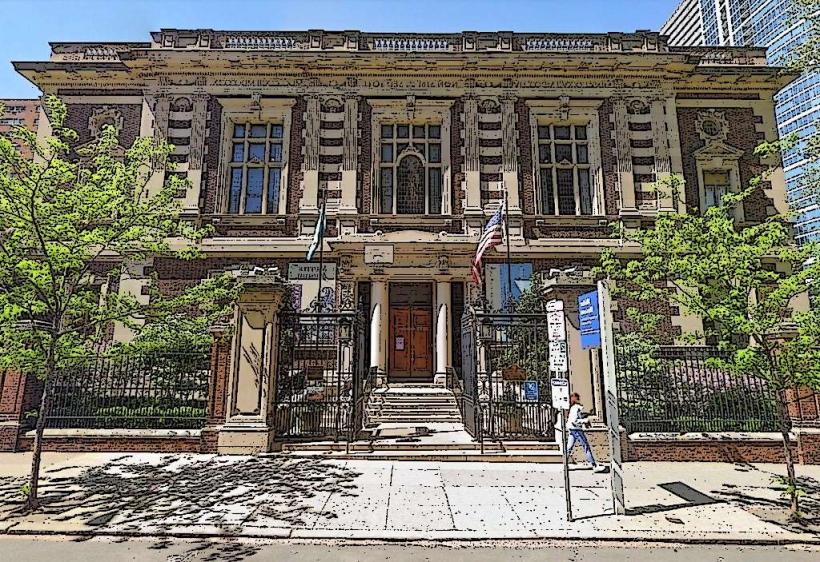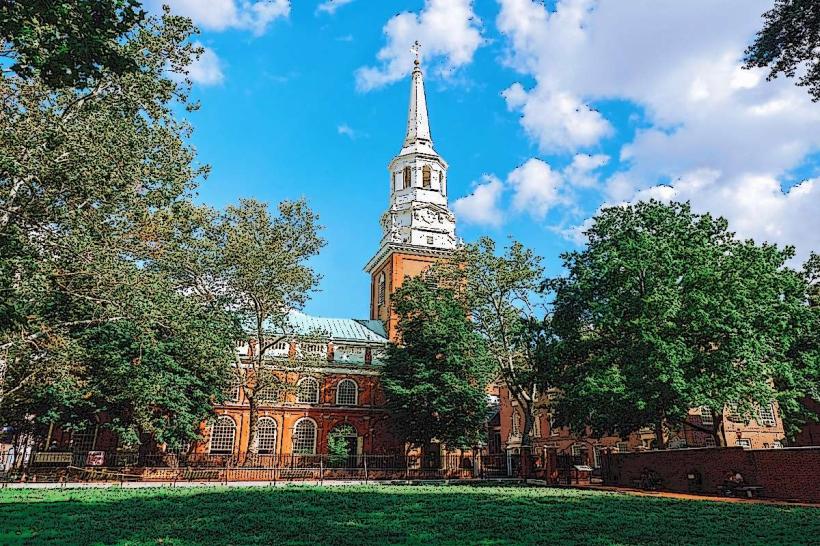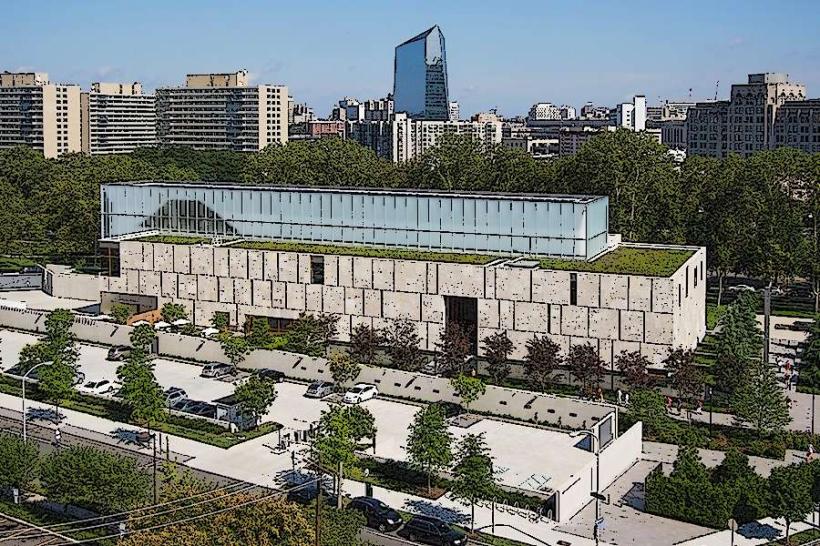Information
Landmark: Betsy Ross HouseCity: Philadelphia
Country: USA Pennsylvania
Continent: North America
Betsy Ross House, Philadelphia, USA Pennsylvania, North America
Overview
At 239 Arch Street in Philadelphia’s Historic District, the Betsy Ross House stands as a beloved landmark and working museum, honoring the woman long believed to have stitched the very first American flag, besides step inside this house and you’ll slip back into 18th‑century Philadelphia, sensing the creak of wooden floors as the story of one of the era’s most iconic figures brings the Revolutionary period vividly to life.Built around 1740, the house once sheltered Betsy Ross-born Elizabeth Griscom-during the American Revolution, its brick walls holding the echoes of a turbulent time, in conjunction with betsy Ross worked as an upholsterer and seamstress, and legend says George Washington, along with a few Continental Congress members, asked her in 1776 to stitch the very first American flag-its stars crisp against a field of deep blue.Some historians question the story’s accuracy, pointing to the scant records that survive, yet the timeworn house still stands as a vivid emblem of American independence and of the women who helped forge the nation, while betsy Ross lived with her family in this modest rowhouse, where she stitched upholstery and sewed in the lamplight-work that, according to legend, included making the flag.At the Betsy Ross House, you can step inside the preserved rooms of this historic site and trace her life through worn quilts, hands-on exhibits, and lively reenactments, moreover on self-guided tours, visitors wander through the house at their own pace, stepping into places like the upholstery workshop, Betsy’s cozy bedroom, the sunlit parlor, and the warm, bustling kitchen, in some ways Each room is carefully furnished and arranged to echo colonial-era life, with touches of Betsy’s own story-a worn leather trunk by the window, for instance, besides audio Guides: Take a detailed audio tour that brings Betsy Ross’s world to life-her family’s voices, the creak of timeworn floorboards, and the turbulent politics of her era.Actually, Wearing crisp colonial garb, staff step into the roles of Betsy Ross and other figures from the era, weaving stories and fielding questions that make the past feel close enough to touch, to boot these interpreters bring the Revolutionary War era to life, showing visitors the hardships and routines of everyday living-like the smell of bread baking in a wood-fired oven or the scrape of a musket being cleaned.Inside the house, you’ll find original pieces tied to Betsy Ross and her family-worn leather-bound Bibles, well-used sewing tools, cherished personal keepsakes, and even reproductions of the very first flag, therefore behind the house, the courtyard feels calm, with soft light falling across worn stone, inviting you to sit and let your thoughts wander.It’s also where Betsy Ross and her third husband, John Claypoole, are buried, their graves marked by simple stones worn smooth with age, on top of that the Betsy Ross House offers a lively mix of educational and cultural programs year-round, from hands-on colonial craft workshops to celebrations of American history.One highlight is the Flag Festival-a week of family-friendly activities, talks, and live demonstrations that bring the stories and symbolism of the American flag to life, right down to the feel of crisp fabric snapping in the breeze, on top of that sip & Stitch offers cozy evening meetups where guests can trade stories over a warm cup of tea, work on sewing projects, and explore the textures and patterns of colonial-era textiles.Tipsy History blends lively storytelling with cocktails crafted to match the theme, bringing to life moments from Betsy Ross’s world and the bustling streets of colonial Philadelphia, consequently first Friday Movie Nights bring outdoor films to the courtyard, where, on warm evenings, you can sink into a lawn chair under the stars.Patriotic Pet Parade: On July 4th, pets strut down the street in red, white, and blue outfits, bringing a lively burst of color to the holiday celebration, besides because the Betsy Ross House is a historic building, some spots have tight stairways and narrow halls-one staircase feels no wider than a kitchen chair-which can make it hard for visitors with wheelchairs or strollers to get through, somewhat Still, the museum staff is ready to help, offering an easy-to-navigate first-floor tour with audio guides-perfect for visitors who move at a slower pace or rely on wheelchairs, in conjunction with wheelchair users can easily reach both the courtyard and the museum shop, with smooth paths leading right to the doors.You’ll find it at 239 Arch Street, Philadelphia, PA 19106, right in the city’s Historic District where brick sidewalks line the street, in turn we’re open every day from March to November, 10 a.m. To 5 p.m, with the scent of fresh coffee drifting from the café each morning; from December through February, stop by Wednesday through Monday-we’re closed on Tuesdays, then general admission costs about $12 for adults, while kids, seniors, military members, and students can snag a discounted rate-sometimes just enough for an extra scoop of ice cream afterward.Kids under five get in free-no ticket, no fuss, furthermore the museum shop sells colonial-style crafts, books, flags, and other keepsakes, including flags that once flew over the house-each accompanied by a crisp certificate of authenticity, moderately The Betsy Ross House isn’t just an classical brick building-it opens a door to America’s early days and to the women whose quiet, tireless work rarely makes it into the history books, equally important with its carefully preserved rooms, hands-on exhibits, and lively programs, the museum offers an experience that teaches and inspires, honoring Betsy Ross’s legacy and the bold spirit of the American Revolution, to some extent Visitors amble away picturing the bustle of 18th‑century streets and feeling a sharper respect for how the American flag-and the nation behind it-came to be.
Author: Tourist Landmarks
Date: 2025-10-01


